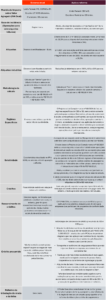The recently approved Tax Reform brought numerous changes to the current model of Brazilian taxation.
Throughout the period of discussion of the final text, much has been said about the impacts suffered by the main sectors of the economy, including trade and, more specifically, the domestic market.
The domestic market plays a fundamental role in the country’s economic scenario, since stimulating the development of these local activities directly influences the expansion and competitiveness of Brazilian companies in the international market, for example.
In this sense, the adoption of a single taxation model such as the one established with the Tax Reform (VAT), which favors the principle of neutrality, as well as reflecting the real tax burden applied to each product, means that commerce is able to more clearly measure and set the final price of the items sold. It is undeniable, therefore, that by establishing more consistent prices, the domestic product becomes more attractive.
In addition, by eliminating the cascading effect of chain taxation, traders can make full use of the credits spent on their production/trading, once again making the product offered on the domestic market more competitive.
Another point that adds benefits to the sector is the use of the “outside” calculation methodology, whereby taxes are not allowed to be included in their own calculation bases. This is an extremely positive factor, since overlapping taxes have a direct impact on the final price.
Also, given that the IBS will, in principle, be taxed at the place of destination of the goods, it can be seen that the adoption of this model tends to minimize the effects of the tax war between states and municipalities, so that the use of a nationwide rate aims to facilitate and reduce bureaucracy in the model for collecting and distributing resources.
Understanding the Reform
The main change in the tax reform is the consolidation of five taxes into two.
According to the text, the new tax system foresees that the federal taxes IPI, PIS and COFINS will be transformed into the Contribution on Goods and Services (CBS), while the state tax ICMS and the municipal tax ISS will be unified into the Tax on Goods and Services (IBS).
There will also be a Selective Tax (IS), which will be levied on goods and services that are harmful to health or the environment, with the aim of discouraging the production and consumption of these items.
The text approved by Congress added a “brake” to the single national rate, set at 26.5%. The IBS and CBS rates will be set individually by each entity (Union, States and Municipalities), by means of specific laws.
The proposal states that an assessment will be made in 2031, to check whether the sum of the CBS and IBS rates, which will come into force in full in 2033, will result in a value higher than 26.5%. In the event that the value is higher than estimated, a new bill will have to be sent by the Executive Branch, in conjunction with the Management Committee, in order to propose a reduction in benefits for sectors or products.
Points of attention
It is a fact that the services sector will be the most affected by the Tax Reform and some factors have drawn the attention of domestic market traders. Among them are the uncertainties regarding tax rates and calculation bases, as well as the delegation of the main points of the Reform to complementary laws.
Another point that deserves careful attention concerns the Manaus Free Trade Zone (ZFM), since free trade areas have various tax incentives and their reduction or limitation has an impact on the sale of goods that have been produced through “incentivized industrialization”.
It can be seen, therefore, that although there are points of attention to be observed by the sector, it is undeniable that the Tax Reform will provide long-term benefits to the domestic market, bringing more competitiveness to the trade developed here.
Main changes compared to the current system
Below is a table summarizing the main changes brought about by the Tax Reform compared to the current system:

The comparative table above shows the changes that could occur with the Tax Reform in the trade sector, specifically in the domestic market.
Did you like the content? We hope it has clarified what will change for the domestic market with the Tax Reform.
If you have any questions, click here and talk to our team of experts.








